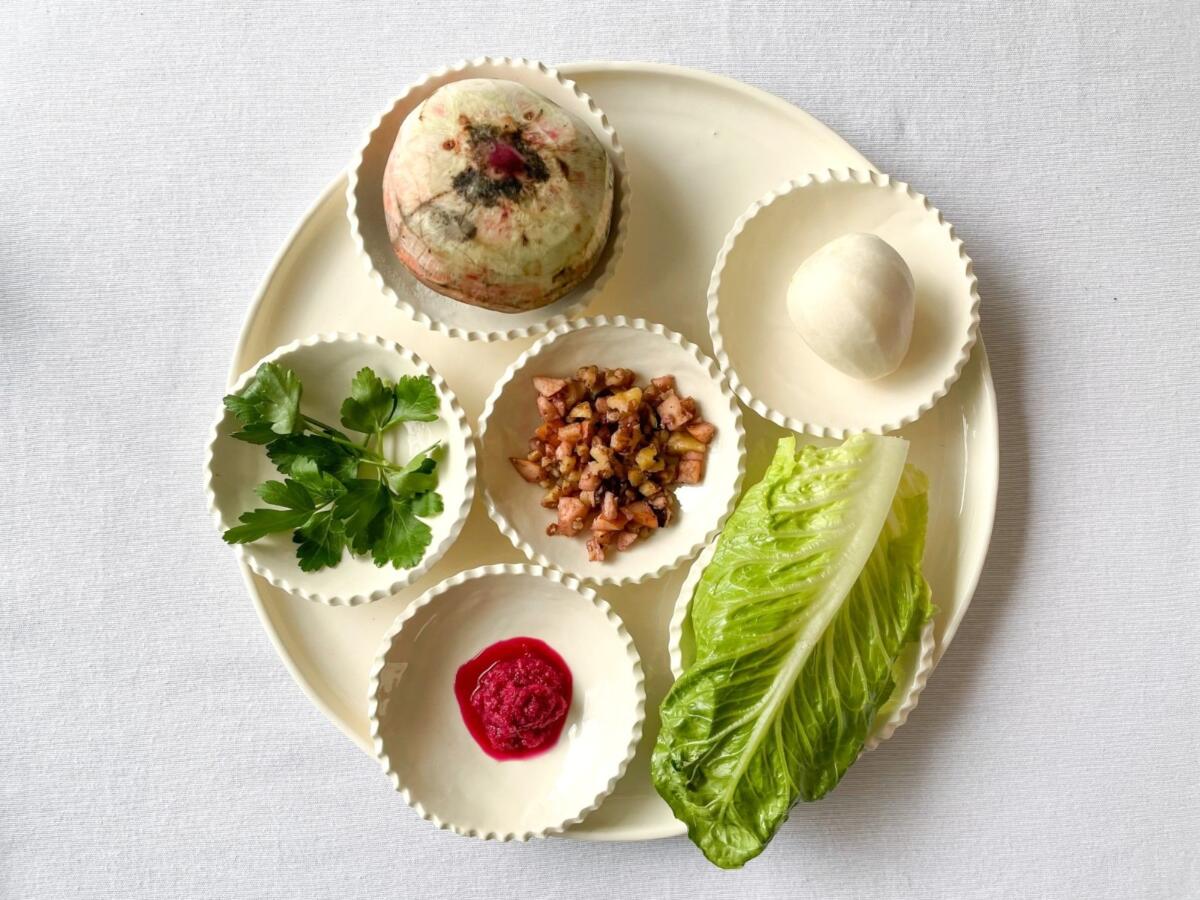Passover is a holiday replete with dietary restrictions, so it’s understandable that some might be reluctant to add to the already long list of prohibited foods on the holiday. But if you’re vegan, making the centerpiece of the Passover seder table free of all animal products might be among the easier steps to take on the holiday.
Four of the six traditional items on the seder plate are already vegan — haroset, maror, karpas and hazeret. That leaves just two — zeroah (the shankbone) and beitzah (egg) — that need replacing.
There is precedent for substituting two vegetables for the egg and shankbone in the Talmud, which records that Rav Huna would use beets and rice for the two cooked items on the seder plate.
While beets pose no issue, for Ashnenazi Jews who observe the traditional prohibition on kitniyot, rice isn’t allowed on Passover. Some have suggested using an avocado pit as an alternative. Or one could use an orange, a contemporary tradition some have adopted as a feminist gesture.
With your help, My Jewish Learning can provide endless opportunities for learning, connection and discovery.
Need more ideas? Check out this guide to vegetarian Passover foods.
seder
Pronounced: SAY-der, Origin: Hebrew, literally "order"; usually used to describe the ceremonial meal and telling of the Passover story on the first two nights of Passover. (In Israel, Jews have a seder only on the first night of Passover.)
Talmud
Pronounced: TALL-mud, Origin: Hebrew, the set of teachings and commentaries on the Torah that form the basis for Jewish law. Comprised of the Mishnah and the Gemara, it contains the opinions of thousands of rabbis from different periods in Jewish history.



